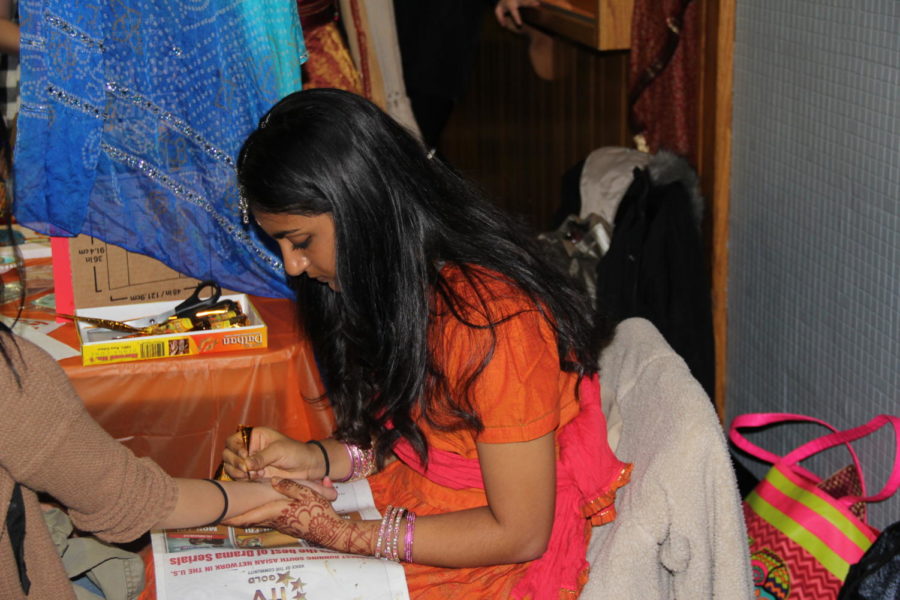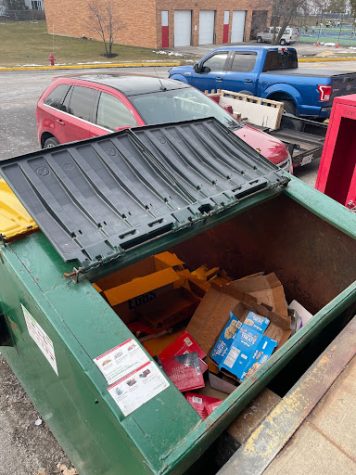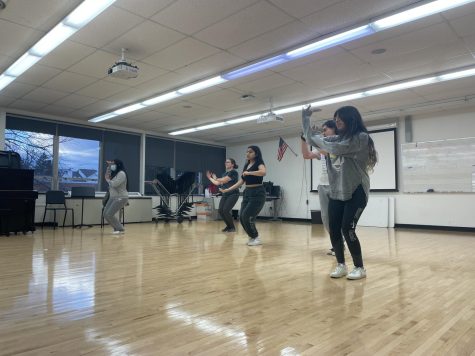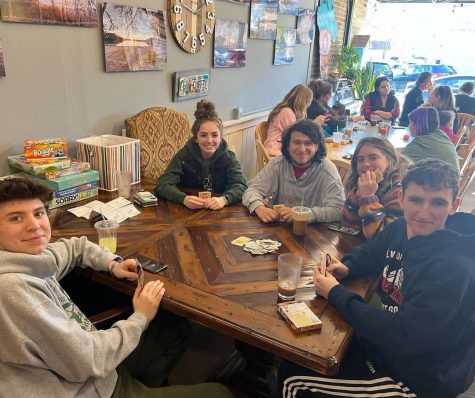Unique cultures were on display at MHS’ first ever Cultural Fair
February 26, 2019
Fifteen cultures were on display at MHS’s first annual cultural fair, called Common Ground, which was held on Thursday, Jan. 17.
The cultural fair came to be thanks to Senior Jillian Hoffstadt, who came back inspired from a summer trip to South Africa. Her experience encouraged her to spread cultural awareness in her community.
“The reason we’re doing this is so that people feel like they’re more included and to make a better environment and a better community for MHS,” Hoffstadt said.
Hoffstadt added she wanted to celebrate the diversity of the student body at the school.
“I recognized the need for students who want to share their culture with their peers and those who don’t want ethnicity or race to be taboo anymore,” she said. “I want our school to be a place where every student feels welcome and appreciated by other students and that can encompass their ethnic identity.”
When Hoffstadt approached Literacy Center instructor Anna Grig and asked whether she was interested in being a staff sponsor, Grig jumped at the chance.
“I’ve been wanting to do this since last year, so I’m so glad she invited me,” Grig said.
Students ran booths set up near the Commons during second through seventh period to showcase the diverse cultures of the student body. During the lunch periods, students could also attend student performances in the Auditorium.
Crowded throughout the day, the fair received positive comments from the attendees as they viewed items, sampled foods and talked with those wearing clothing representative of their cultures.
“The fair was very interesting, and I learned a lot about different cultures,” Freshman Taylor Testin said.
After a successful inauguration, Grig hopes that next year the fair will have double the number of booths and that they can involve the community by extending the event to a weekend or evening.
“As diverse of a population as we have, I wanted to make sure everybody can show their heritage, their culture and be represented in this fair and feel like they are a part of the Mundelein Community,” Grig said.
Overseeing the Ireland booth, Senior Molly Podraza worked the fair to support her friend Hoffstadt who proposed the idea of the cultural fair in the first place.
In August, her best friend Hoffstadt got the idea for a fair, and since then, the two worked to gather artifacts for their displays through research and by reaching out to family.
“[I’ve] been preparing research since [the idea was first proposed] and the physical stuff for a few weeks now,” Podraza said.
Since she and Hoffstadt have been friends since the fourth grade, Podraza felt the need to help Hoffstadt reach her goal of offering a cultural fair at the school.
“I know [Hoffstadt] worked really hard to have this idea come to life,” Podraza said.
Therefore, Podraza said it meant a lot to her to have her own booth and to represent Ireland. In her opinion, the most important part of recognizing and appreciating each other’s traditions is “being able to share that Mundelein is more diverse than we originally thought.”
Julissa Argomaniz, senior, is of French descent and signed up to represent France to educate her peers about the country’s rich history and elegance.
“If you ever visit France, I really suggest going to see the Eiffel Tower and the Louvre because those are two of the most popular attractions in the country,” she said.
While many know what the Eiffel Tower is, the Louvre is the world’s largest art museum and home to artwork, such as the Mona Lisa, Venus de Milo, a famous Grecian sculpture, and Dying Slave, a popular piece of art from the Renaissance.
What might keep some from going to France are the misattributed stereotypes.
“Many people who have not been to France believe the locals are rude, mean or self-centered,” Argomaniz said. “But those stereotypes are completely wrong as the French are very well-mannered people.”
Senior Anushka Desai helped run the booth for India. Desai was born in the U.S., but her family is from Mumbai, Gujarat, and has frequently visited her family there throughout the years.
Desai said that it is extremely important to express one’s culture and teach others who may not be as informed about a culture.
“I decided to help with this fair because I think that it’s important to show my pride for my country and teach others about my culture,” Desai said.
At their booth, Desai and the others offered free henna hand painting, had authentic home-made food (somosas and sosa) and lots of traditional artwork.
Other than at the fair, Desai expresses her culture in other ways, too.
“I love to show my culture whenever I can,” Desai said, “and a few of the ways I do this is by participating in cultural dances, artwork, such as henna, and speaking my language at home.”
Sophomore Mia Marshall and Freshman Maxim Marshall, siblings, represented Bulgaria, which is located in Eastern Europe.
Ever since the Marshalls were little, they have embraced the culture because of family ties and their mother growing up in the country.
To display their particular heritage, the Marshalls’ booth included a poster with facts about the country and the Bulgarian lifestyle.
“It was awesome to see what students brought to show other students about their culture because culture can be such a big part of our lives,” Mia Marshall said.
Kayla Bui, senior, was one student tending to the Asian Culture Club booth.
“Everyone at the club agreed it would be a good idea to spread information about the club by having a table,” Bui said.
As a group, Asian Culture Club decided a booth at the fair would benefit both those involved with the fair and the club because it would promote some of the activities the club does.
“[The club] has gone to Chinatown the last two years and will visit Mitsuwa [Marketplace in Arlington Heights] this year,” Bui said.
Besides benefiting the club, it also benefited the individual students in the club, too.
“It has taught [me] about cultures and how to embrace my own,” Bui said. “Asian culture isn’t popular here at Mundelein, so it’s nice to have something dedicated to it.”
For Yianna Schneckloth, junior, being Greek is an important aspect of her and her family’s life. Schneckloth was nine years old when she first visited Greece and has learned a lot about the Greek culture since then.
“Well, first off, there are not a lot of cars,” Schneckloth said about the difference between Greece and America. “Also, people are a lot nicer and more welcoming.”
Schneckloth was born in America, but her family is from the Island of Crete, the biggest Island of Greece. She speaks fluent Greek, as it is a big part of her household.
“My mom and Grandma inspire me the most,” she said. “My mom’s side of the family is Greek.”
At the booth, Schneckloth offered Baklava, a sweet pastry with honey and nuts. Schneckloth’s favorite Greek food, however, is Pastitsio, which is “compared to lasagna but with more cheese.”
Schneckloth said she is set to visit Greece again this summer and is proud to represent her food and her culture.
Vice president of the cultural fair Hana Fakhoury, senior, represented Morocco and was a part of the executive board who helped create and run the fair.
“I think that there is so much about the world and each other that we don’t know, but it is still important,” Fakhoury said. “I think that it is important to put yourself out there and get to know people and what is going on around you, to appreciate all the beauty that there is in other people and their cultures.”
During the event and in a traditional Moroccan dress, Fakhoury could be seen either running from booth to booth checking on the participants or in the auditorium announcing the various performances.
Fakhoury said she sees the importance of people expressing their culture and being proud of who they are despite those who try to tear them down.
“It is something really important to me because, for example, my mother and I were at the gas station yesterday, and she was wearing a Moroccan dress, and she got some slang thrown at her, like ‘Go back to your country,’ etc.,” Fakhoury said. “[The fair] is a way for me to be proud of the students who are brave enough and have enough heart to come out here and show who they are, and their cultures represent that.”


![MHS Alum Trey Baker hosting a MBK rising event on February ninth at the MHS annex. Said Baker, “I’m just really excited [and] super grateful for the community of Mundelein, for our educators, for our administration, at MHS who are really buying into this.”](https://mhsmustang.com/wp-content/uploads/2023/03/TreyBaker-350x475.jpg)

